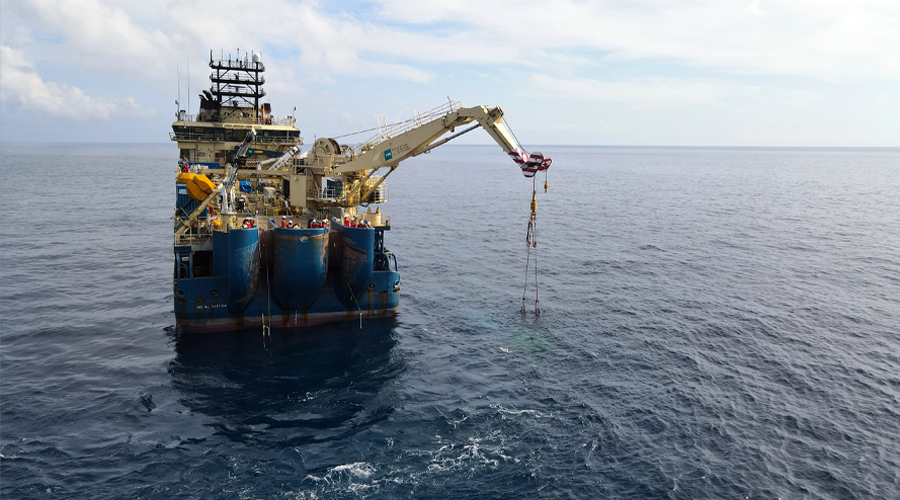
In Sicily, at Capo Passero, the upgrade of the IDMAR submarine cable infrastructure has been completed. The infrastructure will establish a connection between the land-based laboratory and approximately 100 detection units of the KM3NeT submarine telescope (in addition to the 30 or so units connected to the first submarine cable installed in 2007), and quadruple the data and electrical power transmission capacity between land and sea. The system just completed, funded within the PON IDMAR project, consists of a next-generation submarine cable, a power and control system that enables it to provide more than 80 kW of power, and a submarine structure, called Cable Termination Frame, weighing over 12 tonnes, which houses 4 power converters, in turn connected to 16 electrical and optical output connectors. This is an innovative system that ASN Alcatel Submarine Network, part of Nokia, has developed over the past few years for INFN. The new submarine infrastructure will also allow the installation of the observatories planned by the EMSO-ERIC European research infrastructure, the Itineris National Recovery and Resilience Plan Project and the regional Marine Hazard project. The launch of the KM3NeT4RR project, funded under the National Recovery and Resilience Plan and made official a few days ago, is the next step in the overall initiative.





